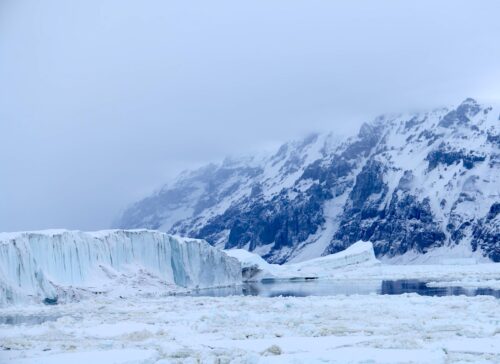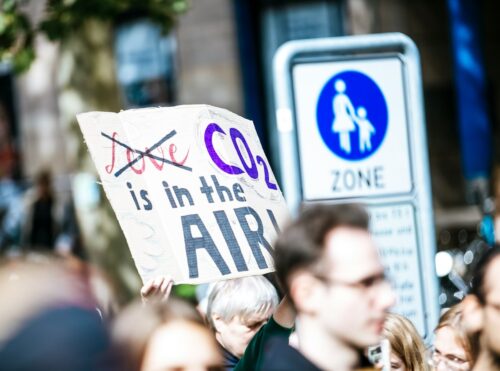 At least twice in Earth’s history, nearly the entire planet was encased in a sheet of snow and ice.
At least twice in Earth’s history, nearly the entire planet was encased in a sheet of snow and ice.
These dramatic “Snowball Earth” events occurred in quick succession, somewhere around 700 million years ago, and evidence suggests that the consecutive global ice ages set the stage for the subsequent explosion of complex, multicellular life on Earth.
Scientists have considered multiple scenarios for what may have tipped the planet into each ice age.
While no single driving process has been identified, it’s assumed that whatever triggered the temporary freeze-overs must have done so in a way that pushed the planet past a critical threshold, such as reducing incoming sunlight or atmospheric carbon dioxide to levels low enough to set off a global expansion of ice.
But MIT scientists now say that Snowball Earths were likely the product of “rate-induced glaciations.” That is, they found the Earth can be tipped into a global ice age when the level of solar radiation it receives changes quickly over a geologically short period of time.
The amount of solar radiation doesn’t have to drop to a particular threshold point; as long as the decrease in incoming sunlight occurs faster than a critical rate, a temporary glaciation, or Snowball Earth, will follow.
These findings, published in the Proceedings of the Royal Society A, suggest that whatever triggered the Earth’s ice ages most likely involved processes that quickly reduced the amount of solar radiation coming to the surface, such as widespread volcanic eruptions or biologically induced cloud formation that could have significantly blocked out the sun’s rays.
The findings may also apply to the search for life on other planets. Researchers have been keen on finding exoplanets within the habitable zone — a distance from their star that would be within a temperature range that could support life.
The new study suggests that these planets, like Earth, could also ice over temporarily if their climate changes abruptly. Even if they lie within a habitable zone, Earth-like planets may be more susceptible to global ice ages than previously thought.
“You could have a planet that stays well within the classical habitable zone, but if incoming sunlight changes too fast, you could get a Snowball Earth,” says lead author Constantin Arnscheidt, a graduate student in MIT’s Department of Earth, Atmospheric and Planetary Sciences (EAPS). “What this highlights is the notion that there’s so much more nuance in the concept of habitability.”
Arnscheidt has co-authored the paper with Daniel Rothman, EAPS professor of geophysics, and co-founder and co-director of the Lorenz Center.
A runaway snowball
Regardless of the particular processes that triggered past glaciations, scientists generally agree that Snowball Earths arose from a “runaway” effect involving the ice-albedo feedback: As incoming sunlight is reduced, ice expands from the poles to the equator.
As more ice covers the globe, the planet becomes more reflective, or higher in albedo, which further cools the surface for more ice to expand. Eventually, if the ice reaches a certain extent, this becomes a runaway process, resulting in global glaciation.
Global ice ages on Earth are temporary in nature, due to the planet’s carbon cycle. When the planet is not covered in ice, levels of carbon dioxide in the atmosphere are somewhat controlled by the weathering of rocks and minerals.
When the planet is covered in ice, weathering is vastly reduced, so that carbon dioxide builds up in the atmosphere, creating a greenhouse effect that eventually thaws the planet out of its ice age.
Scientists generally agree that the formation of Snowball Earths has something to do with the balance between incoming sunlight, the ice-albedo feedback, and the global carbon cycle.
“There are lots of ideas for what caused these global glaciations, but they all really boil down to some implicit modification of solar radiation coming in,” Arnscheidt says. “But generally it’s been studied in the context of crossing a threshold.”
He and Rothman had previously studied other periods in Earth’s history where the speed or rate at which certain changes in climate occurred had a role in triggering events, such as past mass extinctions.
“In the course of this exercise, we realized there was an immediate way to make a serious point by applying such ideas of rate-induced tipping, to Snowball Earth and habitability,” Rothman says.
Read rest at SciTechDaily



















Where and how big the landmasses were 700 million years ago is very sketchy. Like Stig stated above, anything before the Jurassic is getting pretty speculative, and all the moreso going back to the Cryongenic.
Pangea one big land mass then it broke up into the sperate Nations and Islands we have now evedence for Noah’s Flood Sea Creature Fossils on Mountain’s
We know quite a lot about the state of Earth 700 million years ago. During that period (680-900 million years ago, roughly), there was a super-continent which comprised nearly all the land mass on the planet and it has been named Rondinia. You can look it up. The general belief is that most of the land mass collected in a zone that straddled the equator, much of which elevated to very high altitudes, forming what some like to call a “3rd pole.” At these altitude, over prolonged time, glacial ice may have formed across much of Rodinia, helping to trigger the Snowball Earth episode.
The article seems to make the assumption that carbon dioxide is the ‘control knob’ for global temperatures. What else could cause a reduction of oncoming solar energy? How about inter-stellar dust? Our solar system revolves around the galactic center, sometimes above and sometimes below the galactic plane.
What else from outside the earth could have an effect. Novas, super novas? Why must it be carbon dioxide; too little or too much?
Agree. The carbon dioxide bit seems so far out of context here. I can understand the volcanic effect, cloud cover and albedo affect but the CO2 as the control knob 🙂 If the slow carbon cycle were a factor, then with the earth covered in glaciation, all that grinding that makes glacial valleys would increase rock weathering etc. I think when the volcanic clouds disperse and the sun reaches earth, the melt would ensure/
Pangea started to break up 200 – 150 million years ago. Who knows what the continents looked like 700 million years ago? The only thing we know is that the shown image of the “snowball earth” is wrong!